You’re afraid. That’s understandable.
Perhaps you think that because you can’t do activities as you used to, then you shouldn’t do them at all.
Perhaps you think that if one slight move gives you pain, then you should stop moving in general.
Perhaps you think you’ve tried everything and none of it has been successful.
Or perhaps, you’re brave right now—because you decided to take a peek at how to stay active even though it feels like the pain will never end when you do one wrong movement. We’ve been in this exact situation which is why we know the exact moves to do and not do for you to keep active.

You could have a bad knee (or knees) because you’re someone who participates in lots of sports and got an injury as a result.
Yoga practice? Check.
Skiing? Check.
Gymnastics? Check.
Football? Check.
Ice skating? Check.
Getting run over by your 100 pound dog? Believe it or not…double check.
These activities are all ones in which we’ve gotten injuries.
Perhaps you got your bad knee from a car accident, or some other form of accident. Or maaaaybe, even as a result of your own stupidity (such as balancing on top of a ladder on your tippy toes, trying to screw the massive lamp in).
Maybe you even got your bad knee(s) from “old age” as you claim! Every time someone says this we ask what your occupation is—it immediately becomes clear what the real reason is behind your bad knee(s). Hint: it’s usually because you aren’t active enough. People haven’t met the active guidelines for a while, as mentioned in a previous article. I’m talking about you, office workers.
No matter what the reason is for your bad knee(s), the worst thing you can do is to cease all physical activity. You can still can enjoy physical activity, but you must make sure that the type of activity you do is not injuring you even more. A great low-intensity activity you can do is yoga. It probably scares you to do it because the mainstream media has taught you that in order to practice it, the goal is to do all the poses perfectly.
How wrong this is.
Modified Yoga Poses for Your Bad Knees
Yoga practice is for you, and you only. You should be doing what feels comfortable for your body and for your environment. Practicing yoga becomes particularly more of a physical activity once you start doing it with an injury. That’s because your yoga practice has to be more dynamic than it would without an injury. Even if you’re comfortable enough holding the pose, it’s better to be performing it dynamically.
Why Dynamic Yoga is Best For Injured Joints
Muscles and bones have direct blood supply. They have capillaries feeding their tissues with the blood, but joints don’t have this luxury. Instead, some of the joints have synovial fluid surrounding them.
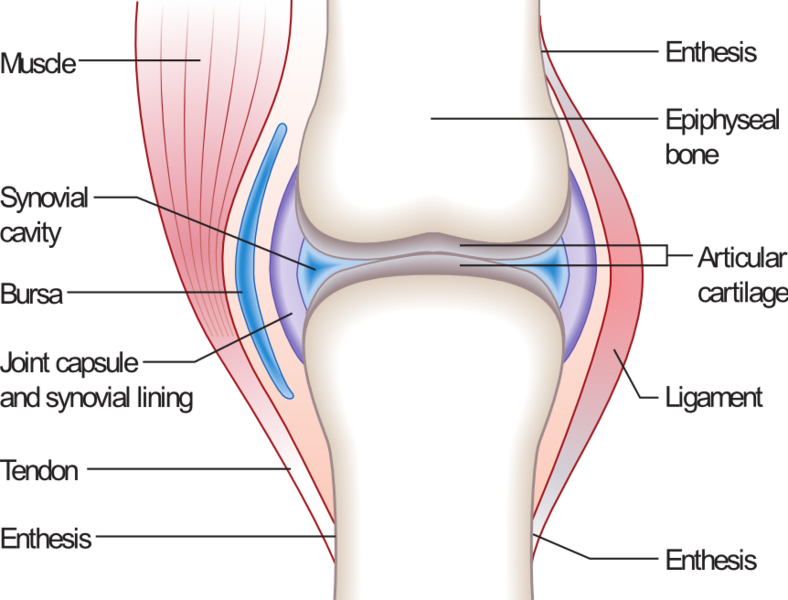
↑
See where it says “synovial cavity”? That’s where you can find the synovial fluid which makes it easier for the joints to work together.
“What does this mean for my yoga practice?”
Simply put, longer warm up is necessary. Make sure all of your muscles feel ready to jive and learn new movements. Sure, you may feel silly, but you’ll learn much more about your body being active than sitting still. It will give you the energy, the knowledge, and tremendous respect to the way in which we are built to restore our body to its original capacity.
Here are some of the yoga poses you can perform dynamically. This is Part 1 of our Modifications for Knees Series.
Standing Yoga Poses
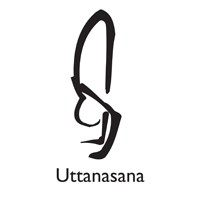
Uttanasana Variations – Standing Forward Bend
Even if your hamstrings allow you to make sure that your sitting bones are your highest point of the body and you truly hinge down from the hips, please, make sure that
a) If you have MCL or ACL problems you should always keep your knees bent.
b) If you have meniscus problems you don’t lift your knees up and lock them.
 Trikonasana – Triangle Pose
Trikonasana – Triangle Pose
Since this pose is asymmetrical (meaning that one side does not look like the other one) it matters which side you have your injury on:
a) You are side-tilting to the side that has the meniscus problem – you can keep the knee straight, but not locked as long as you don’t feel a stretch behind this knee; make sure that most of the weight is on the other foot.
b) You are side-tilting to the side that has MCL/ACL problem – never keep this straight, never go to the point when you feel even a little pain in or behind your knee; make sure that most of the weight is on the other foot.
c) You are side-tilting to the side that has no issue, but the opposite leg has either meniscus, ACL/MCL problems – make sure to have no substantial weight on this opposite leg. In case of ACL/MCL problems – bend this knee. The leg that you are side-tilting to must have no stretchy feeling behind the knee, otherwise you are overstretching the ligaments.
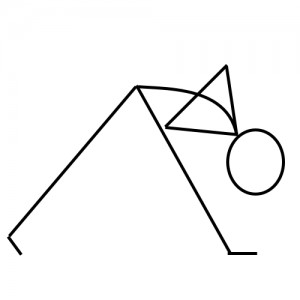 Parsvotannasana – Intense Side Stretch Pose
Parsvotannasana – Intense Side Stretch Pose
Since this pose, like the previous one, is asymmetrical (meaning that one side does not look like the other one) it matters which side you have the injury on:
a) You are bending to the side that has the meniscus problem – you can keep the knee straight, but not locked as long as you don’t feel a stretch behind this knee; you can keep your belly on your front thigh (which will keep you from overstretching your lower back). Try to distribute weight evenly throughout both legs and don’t lift your back heel.
b) You are bending to the side that has ACL/MCL problem – never keep this knee straight, always keep it bent. Distribute weight evenly through both legs, don’t lift back heel, but make sure there is no stretchy feeling right behind the knee of the back leg.
c) Back leg has meniscus problem – you can lift up the heel of the back leg and keep the heel off the ground, but don’t lock the knee. You can keep the leg straight, but make sure there is no stretchy feeling behind the knee.
d) Back leg has ACL or MCL problem – don’t straighten the leg; heel is off the ground.
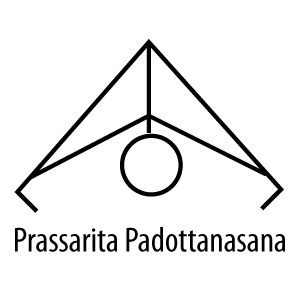 Prassarita Padottanasana – Wide Legged Forward Bend
Prassarita Padottanasana – Wide Legged Forward Bend
You can do this pose with a meniscus injury, but it’s not recommended if you have an ACL or MCL injury.
 Utkatasana – Chair Pose
Utkatasana – Chair Pose
Never bend your knees fully.
In fact, find your pain point and stop bending your knees right before this point.
Keep your heels on the ground for stability, even if you bend your knees slightly.
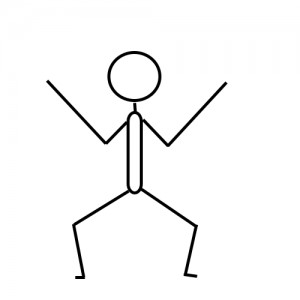 Utkata Konasana – Goddess Pose
Utkata Konasana – Goddess Pose
If you have an injury, you won’t be able to bend your knees all the way. As mentioned before, you should be performing poses dynamically—it’s especially true for this one. This means that you shouldn’t squat and hold the pose for a number of breaths or seconds. Instead, squat during exhalation and reach just before your pain point and straighten (but not completely) your knees. Repeat at least 10-15 times, but make sure that your knees are not passing over your toes like we show here.
 Vrikshasana – Tree Pose
Vrikshasana – Tree Pose
Since this pose is asymmetrical, it depends which side you have your injured knee on.
a) Injured Meniscus on the standing leg – safe only if you can lift up the other foot for placing it well above the knee, but…it would be better to avoid it.
b) Injured MCL or ACL on the standing leg – avoid the pose with placement of the other foot inside of the leg. You could only perform it if you can place the opposite foot in front of your thigh in half lotus.
c) Injured Meniscus, MCL or ACL on the bending leg – don’t bend the knee too much; place it below the other knee.
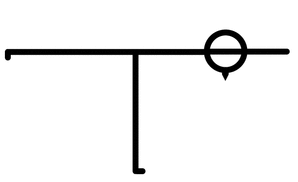 Virabhadrasana III – Warrior III
Virabhadrasana III – Warrior III
Since this pose is asymmetrical it depends which side you have your injured knee on.
a) Injured meniscus on standing leg – you can perform this pose, but be careful with straightening your knee. Make sure that there is no pain behind the knee and no pain in the knee itself. Don’t hold pose for longer than one breath.
b) Injured MCL or ACL on standing leg – don’t straighten the leg; keep it bent.
c) Injured meniscus or ACL/MCL on the back leg – you can easily perform the pose.
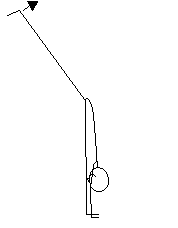 Urdvaika Padottanasana – Standing Split
Urdvaika Padottanasana – Standing Split
Since this pose is asymmetrical it depends which side you have the injured knee on.
a) Injured meniscus on the standing leg – you can perform this pose, but be careful with straightening your knee. Make sure that there is no pain behind the knee and no pain in the knee itself. Don’t hold the pose for longer than one breath.
b) Injured MCL or ACL on the standing leg – don’t straighten the leg; keep it bent.
c) Injured meniscus or ACL/MCL on the back leg – you can easily perform the pose.

Garudasana – Eagle Pose
Avoid Eagle Pose by any means with any types of leg injuries, this is one of the worst poses for any type of knee injuries.
 Ardha Chandrasana – Half Moon Pose
Ardha Chandrasana – Half Moon Pose
Since this pose is asymmetrical it depends which side you have the injured knee on.
a) Injured meniscus on the standing leg – you can perform this pose, but be careful with straightening your knee, just make sure that there is no pain behind the knee and no pain in the knee itself. Don’t hold the pose for longer than one breath, it is better if you go into the pose and right out in slow motion without stopping in it.
b) Injured MCL or ACL on the standing leg – don’t straighten the leg; keep it bent.
c) Injured meniscus or ACL/MCL on the upper leg – you can easily perform the pose.

Malasana – Garland Pose
Avoid this pose with any type of knee injuries!
 Parignasana – Gate Pose
Parignasana – Gate Pose
This pose is asymmetrical and it depends which side you have the injured knee on and also what kind of injury.
a) Injured meniscus on the leg where the knee is on the floor – avoid this pose, this is big NO!
b) Injured meniscus on the straight leg placed outside – you are fine to proceed, but make sure there is no pain in that knee.
c) Injured MCL or ACL on the straight leg placed outside – avoid this pose, it is too dangerous for the knee ligaments.
d) Injured MCL or ACL on the leg where the knee is on the floor – proceed with caution, but I would still avoid it since there is too much pressure on that knee.
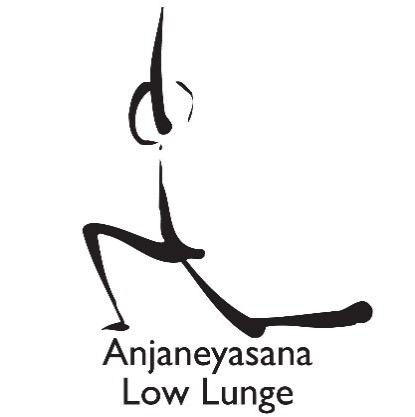 Anjaneyasana – Low lunge Pose
Anjaneyasana – Low lunge Pose
This is a tricky pose and despite its asymmetrical look you’d think that this pose is bad for the knee, but you will be surprised to find out that this pose is very beneficial for restoring knee health. It all depends on the technique of getting into the pose and its alignment.
a) Knee injury on the front knee – make sure that your knee is not in front of the ankle; you can even bend it slightly.
b) Knee injury on the lower knee – make sure that the weight goes more on the upper part of the knee, not on the patella (kneecap), not on the tibia (shinbone), but on the upper part of the knee which is still femur bone, even if you need to move the knee more back for this. There is a misunderstanding that if you bring the legs closer towards each other it is more beneficial. This is incorrect because this way you apply direct pressure to the knee joint instead of the front of the thigh. If this is not possible then you’d better not do the pose at all.
 Virabhadrasana variations – High Lunge or Warrior Pose
Virabhadrasana variations – High Lunge or Warrior Pose
This pose can be very beneficial for knee heath, as long as it is performed correctly.
a) If the injury is on the front leg – distribute the weight evenly between the legs and the arms. Make sure that the front knee is never in front, but slightly behind the ankle.
b) Meniscus injury on the back leg – you can keep the leg straight.
c) MCL or ACL injury on the back leg – never put the heel down; make sure that the leg is on the toe mounts.
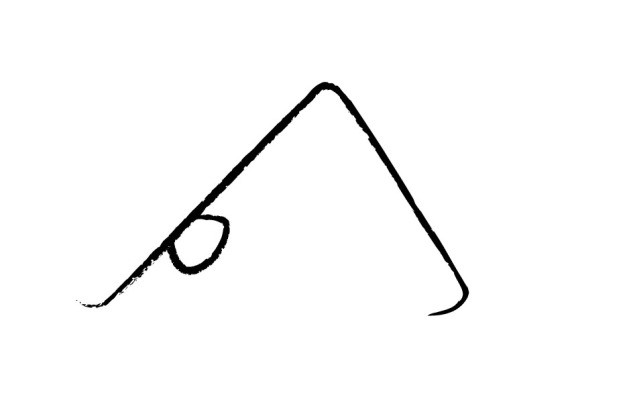 Adha Mukha Svanasana – Downward Facing Dog Pose
Adha Mukha Svanasana – Downward Facing Dog Pose
With any type of knee injury make sure that you are comfortable in the pose. Forget about any types of alignment and just make sure that nothing hurts and nothing is overstretched. Keep the pose dynamic – walk your legs while in the pose.
 Utthita Hasta Padangustasana – Hand to Toe Pose
Utthita Hasta Padangustasana – Hand to Toe Pose
Don’t even try to do this pose perfectly! This is a good pose for rehabilitation of any type of knee injury, but could injure the knees if pushed to perfection.
a) Knee injury on the upper leg – don’t straighten the knee by any means.
b) Meniscus injury on the standing leg – could be straight.
c) MCL or ACL injury on the standing leg – don’t straighten the leg at all.
Hopefully you will try a few of these poses over the next week or so. Remember to do so dynamically—don’t hold any of the poses!
Also remember that the goal is not to perform each pose as if a 19 year-old gymnast is performing it.
The goal is for you to start feeling comfortable enough to take risks with your body. You got hurt, yes. Should that stop you from staying active? Absolutely not.
The goal is not for you to take on the world. Take one step. Maybe even half a step. Inch by inch you’ll get closer to running marathons (figuratively—or maybe not if that’s your goal). Focus on what you can do today. There’s no need to stress about what tomorrow holds.
Soon enough, you won’t even notice your own success. Others will start noticing it for you. You’ll probably get compliments for how subtly confident you’ve become too.
Want to make sure your bad knees are in good hands? Let us know by contacting us here.